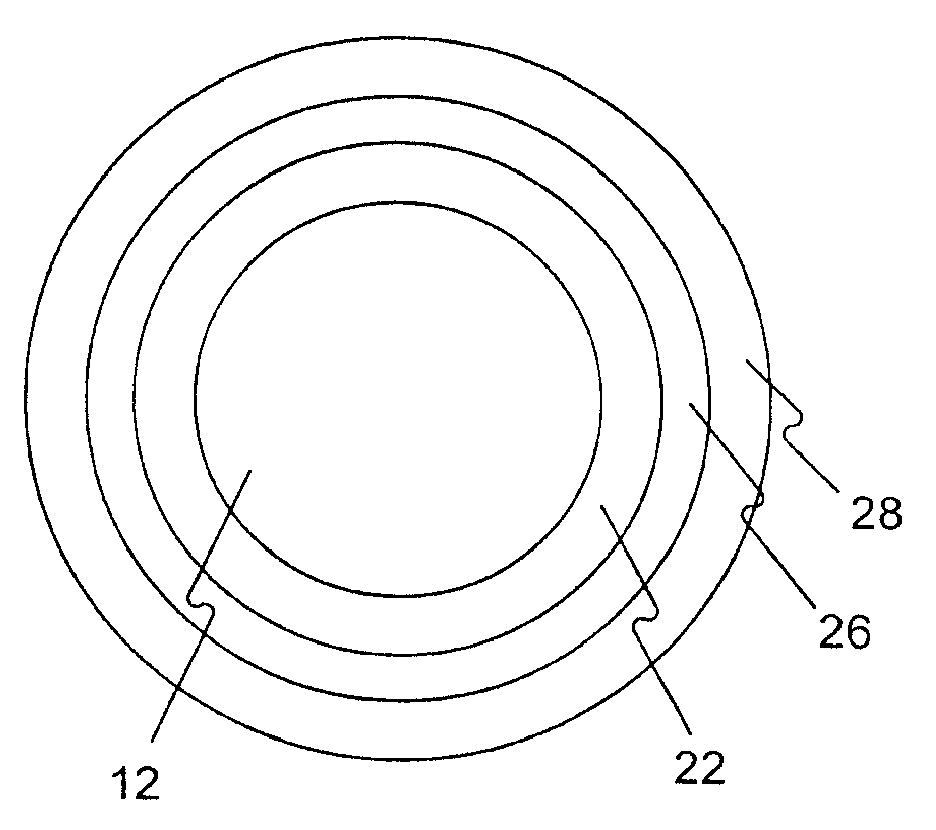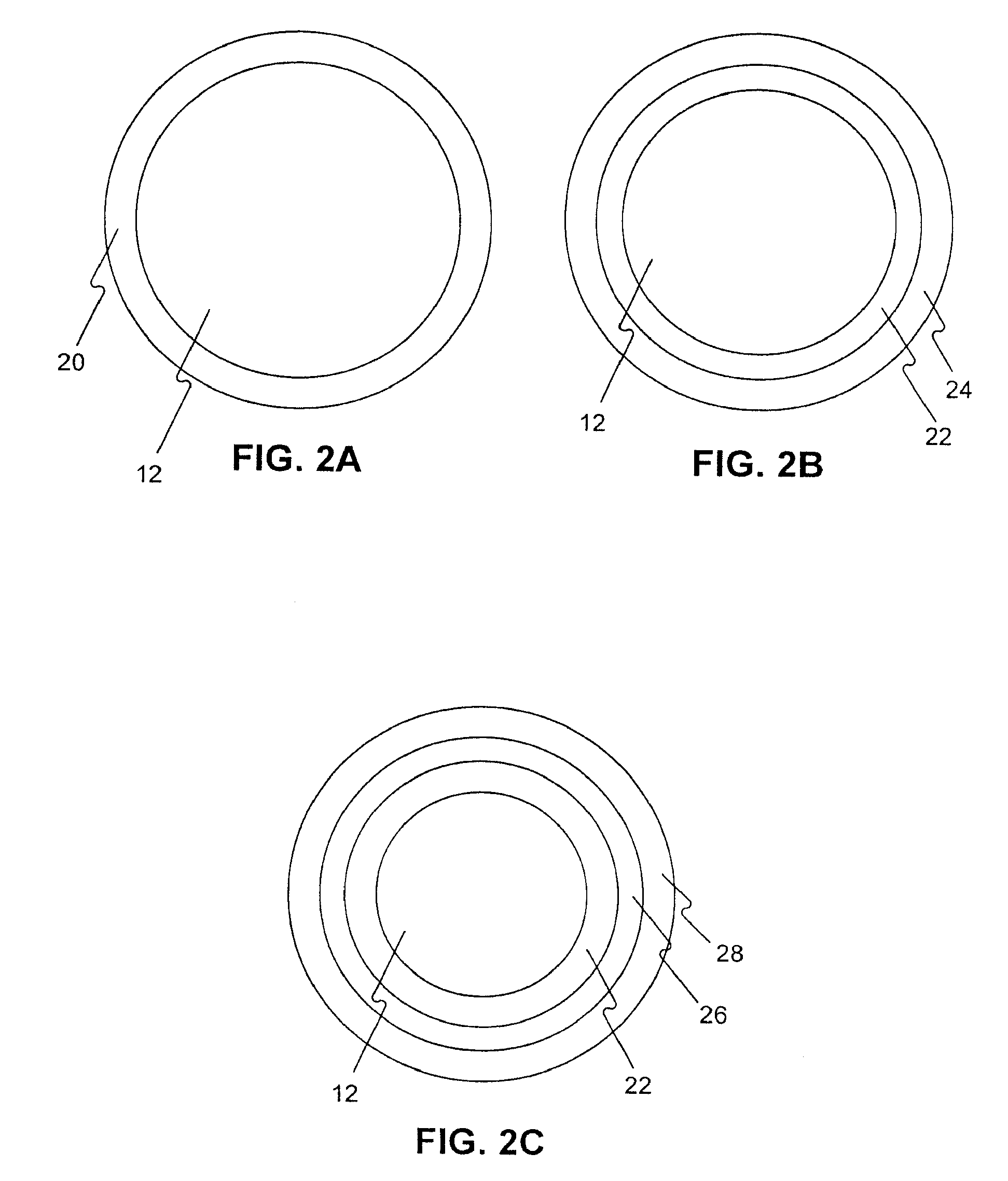Drug releasing coatings for medical devices
- Summary
- Abstract
- Description
- Claims
- Application Information
AI Technical Summary
Benefits of technology
Problems solved by technology
Method used
Image
Examples
Example
Example 1
Preparation of Coating Solutions
[0242]Formulation 1—50-150 mg (0.06-0.18 mmole) paclitaxel, 2-6 ml acetone (or ethanol), 25-100 mg ascorbyl palmitate, 25-100 mg L-ascorbic acid and 0.5 ml ethanol were mixed.
[0243]Formulation 2—50-150 mg (0.05-0.16 mmole) rapamycin, 2-6 ml acetone (or ethanol), 50-200 mg polyglyceryl-10 oleate and 0.5 ml ethanol were wemixed.
[0244]Formulation 3—50-150 mg (0.06-0.18 mmole) paclitaxel, 2-6 ml acetone (or ethanol), 50-200 mg octoxynol-9 and 0.5 ml ethanol were mixed.
[0245]Formulation 4—50-150 mg (0.05-0.16 mmole) rapamycin, 2-6 ml acetone (or ethanol), 50-200 mg p-isononylphenoxypolyglycidol and 0.5 ml ethanol were mixed.
[0246]Formulation 5—50-150 mg (0.06-0.18 mmole) paclitaxel, 2-6 ml acetone (or ethanol), 50-200 mg Tyloxapol and 0.5 ml ethanol were mixed.
[0247]Formulation 6—50-150 mg (0.05-0.16 mmole) rapamycin in 2-6 ml acetone (or ethanol), 50-150 mg L-ascorbic acid in 1 ml water or ethanol, both, then were mixed.
[0248]Formulation 7—50-150...
Example
Example 2
[0270]5 PTCA balloon catheters (3 mm in diameter and 20 mm in length) were folded with three wings under vacuum. The folded balloon under vacuum was sprayed or dipped in a formulation (1-17) in example 1. The folded balloon was then dried, sprayed or dipped again, dried again, and sprayed or dipped again until sufficient amount of drug on the balloon (3 microgram per square mm) was obtained. The coated folded balloon was then rewrapped and sterilized for animal testing.
Example
Example 3
[0271]5 PTCA balloon catheters (3 mm in diameter and 20 mm in length) was folded with three wings under vacuum. The folded balloon under vacuum was sprayed or dipped in a formulation (1-5) in example 1. The folded balloon was then dried, sprayed or dipped again in a formulation (6-10), dried, and sprayed or dipped again until sufficient amount of drug on the balloon (3 microgram per square mm) was obtained. The coated folded balloon was then rewrapped and sterilized for animal testing.
PUM
| Property | Measurement | Unit |
|---|---|---|
| Solubility (mass) | aaaaa | aaaaa |
| Melting point | aaaaa | aaaaa |
| Concentration | aaaaa | aaaaa |
Abstract
Description
Claims
Application Information
 Login to View More
Login to View More - R&D
- Intellectual Property
- Life Sciences
- Materials
- Tech Scout
- Unparalleled Data Quality
- Higher Quality Content
- 60% Fewer Hallucinations
Browse by: Latest US Patents, China's latest patents, Technical Efficacy Thesaurus, Application Domain, Technology Topic, Popular Technical Reports.
© 2025 PatSnap. All rights reserved.Legal|Privacy policy|Modern Slavery Act Transparency Statement|Sitemap|About US| Contact US: help@patsnap.com



